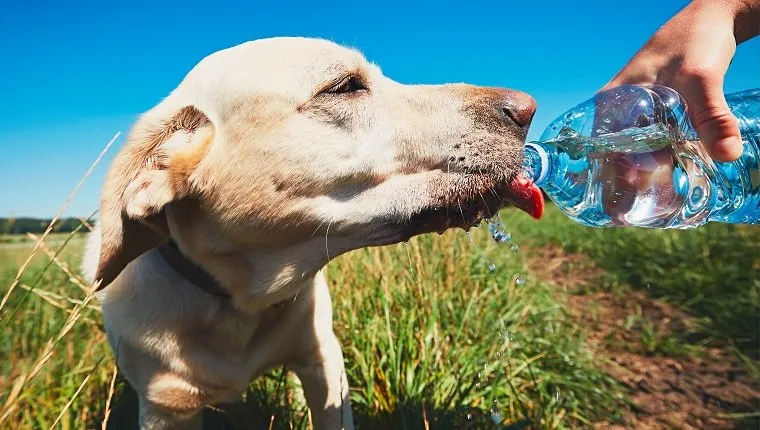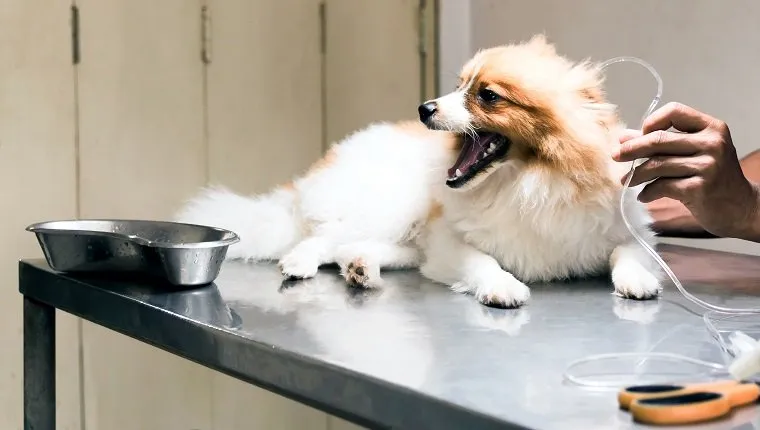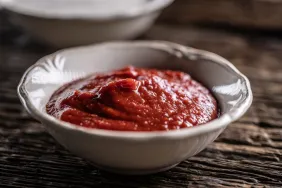Polycythemia in dogs is a condition where there’s an increase in the number or concentration of red blood cells in the circulatory system. It’s the opposite of anemia, a condition where red blood cell count is too low.
This condition can be relative, transient, or absolute.
- Relative polycythemia happens when dogs’ plasma volume decreases, usually from dehydration, which means the relative number of red blood cells increases.
- Transient polycythemia happens when the spleen contracts in response to epinephrine, the stress, anger, or fear hormone, which results in an injection of red blood cells into the circulatory system.
- Absolute polycythemia happens when bone marrow increases production of red blood cells.
All of these can result in similar symptoms, but it’s important for a veterinarian to find out which type of polycythemia a dog suffers from before treatment.
Here’s what you should know about the symptoms, causes, and treatments for polycythemia in dogs.
Symptoms Of Polycythemia In Dogs

The symptoms of polycythemia in dogs can worsen over time and result in further symptoms because high concentrations of oxygen in the blood can cause tissue damage if left untreated. That’s why it is important to consult a vet at the first signs.
If you see any of the following symptoms in your dog, then get to the vet right away:
- Behavioral changes
- Changes in motor or sensory skills, especially vision
- Sneezing
- Nosebleeds
- Dark red, bluish, or pale gums
- Enlarged spleen or liver
- Increased thirst
- Increased urination
- Vomiting
- Diarrhea
- Enlarged abdomen
- Lethargy
- Weakness
- Confusion
- Difficulty walking
- Exercise intolerance
- Difficulty breathing
- Seizures
- Shaking
Causes Of Polycythemia In Dogs

The causes of polycythemia in dogs vary depending on the type. Absolute polycythemia can be further broken down into primary and secondary types, which also have different causes.
Here are several of the causes for each type of polycythemia in dogs.:
- Relative polycythemia – This is most often caused by dehydration, but it can also be caused by blood loss, shock, vomiting, diarrhea, kidney disease, hyperventilation, and any other condition that causes a decrease in the volume of plasma.
- Transient polycythemia – This is caused by contractions of the spleen, which stores mature red blood cells. The contractions result from a rush of epinephrine due to anger, fear, excitement, surprise, or exercise. Usually this is beneficial, as red blood cells deliver oxygen to parts of the body and prepare dogs for physical activity, which is helpful in a flight or fight situation.
- Primary absolute polycythemia – The cause of this condition is unknown. It happens when there is an increase in growth or formation of the bone marrow, which produces red blood cells.
- Secondary absolute polycythemia – This happens when there is an increase in production of the hormone erythropoietin in the kidneys. Erythropoietin is the hormone responsible for stimulating red blood cell production in the marrow. The increase in erythropoietin can be caused by adapting to high altitudes, cancer, pancreatitis, kidney disease, hyperthyroidism, Cushing’s disease, heart disease, lung disease, or other problems with the circulatory system.
Treatments For Polycythemia In Dogs

Treatments for polycythemia in dogs also vary depending on the type and cause. Secondary absolute polycythemia tends to be the most difficult to treat overall.
If your dog suffers from polycythemia, then your vet will find the cause and prescribe treatment.
Here are some treatments you might expect based on which type of polycythemia your dog suffers from:
- Relative polycythemia – Usually a vet will fix this by re-hydrating the dog, sometimes with intravenous fluids.
- Transient polycythemia – This is most often a temporary condition brought on by stress or excitement and resolves itself without treatment.
- Primary absolute polycythemia – This is a chronic, rare disease that a vet may resolve with a phlebotomy, more commonly know as blood letting. The vet puts a catheter in a central vein to remove blood that’s too high in red blood cells, then they replace fluids intravenously to avoid a drop in blood pressure. They may need to repeat the procedure several times. The vet may also prescribe medications to inhibit red blood cell production.
- Secondary absolute polycythemia – The vet must diagnose the underlying cause, and because there are so many potential causes of the condition, treatment can vary a great deal. Often treatment of the underlying cause resolves the issue, and dogs won’t need further treatment; though in some cases, dogs may need phlebotomies to reduce the amount of red blood cells.
Has your dog ever suffered from this condition? How did your vet treat it? Let us know in the comments below!









